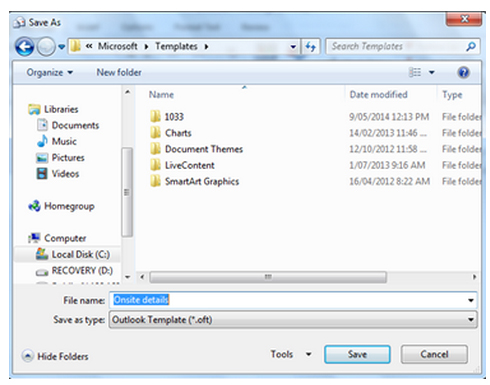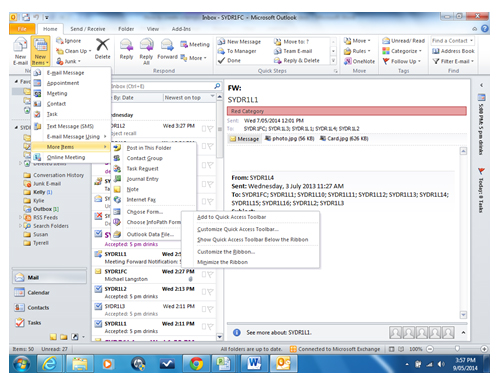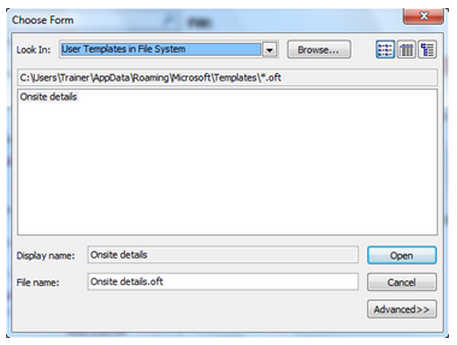
Nov 10, 2014
Microsoft Outlook 2010 and 2013 have predefined templates you can use to maintain consistency in your emails to clients and people you interact with email messages. They will also save the user valuable time. Sometimes, you may want to use your own email layout to include whatever information you want. The benefits of Outlook email template are:- Consistency in the email formats
- Quicker reply rate to your senders
- Save time
- Help reduce errors
- Create the template
- Create a shortcut button for the template
- Use the template
- Open a new email message.
- Type the information you want to include in your email message.
- Insert a table if you think that the message will be clearer.
- Add the required fields (those fields that will be the same in every message).
- Click 'File' tab, Save As option.
- Save as type: Outlook Template (*.oft)

- Click 'Save'.
- Close the template.
- Click the 'Home' tab.
- Go to New group.
- Click 'New Items'.
- Point on More Items.
- Right click Choose 'Form'.
- Click 'Add to Quick Access Toolbar'.

- Click the 'Choose Form button' on the Quick Access Toolbar. The Choose Form dialog box will display.

- In the Look In: section, select the User Template in File System option.
- Double click the name of your template. A copy of your predefined email message template will open.
- Add the information you want and send the email message to the required recipient.
How do your Excel skills stack up?
Test NowNext up:
- Active Directory Administrative Center (ADAC) Updated
- More haste, less speed
- Using Delegates in .NET
- Charts that aren't charts
- Control your digital world from your mobile device
- Using SharePoint to create a 'Team Based Master Calendar'
- Deliver successful organisational transformation
- Removing the background from a picture in Microsoft Office
- The Windows Server 2012 R2 Desktop Experience
- Comparing and combining two lists using VLOOKUPs
Previously
- Wrapping your head around Content Type IDs
- Evolving Office 365 plans
- Killer Fillers
- Duplicate animations with ease using PowerPoint's Animation Painter
- SQL Server in Microsoft Azure virtual machines
- Doing a VLOOKUP that finds exactly what you want
- Designing business continuity management strategies in SharePoint 2013
- Taking the emotion out of feedback
- Use Office 2013 at home with an Office 365 subscription
- Extension methods in C#












